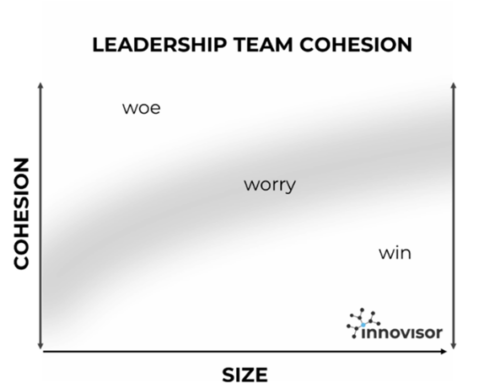The Overlooked Barrier for
Agile Organizations: Gender
How a 25% improvement in cross-collaboration only solved half of the problem
A few years back, a large international oil company came to Innovisor asking for help to improve the ways of collaborating. At the time, the company collaborated in complete siloes based on function – a common barrier for collaboration.
Innovisor’s analytics and insights team looked into the collaborative relationships and co-created the right actions for the oil company to redesign their siloed organization into a matrix organization. The new and improved cross-functional collaboration was to become the fuel to run the engine of innovation and future growth.
Are you also solving only half the problem?

The major organizational redesign was rolled out – and succeeded!
But the success was only partial…
As with any change initiative, it is crucial to track progress. For this purpose, Innovisor was brought in again 1,5 years after the first exercise, to find out how collaboration had changed within the company.
The analysis clearly showed that the company had managed to break down the functional barrier through the implementation of the new matrix structure.
The cross-functional collaboration had improved by 25%.
However, the overall agility of the network had not improved.
In fact, it had worsened slightly.
Look beyond functional silos
In this case, it was not only about structural and organizational barriers. It was also about cultural and interpersonal barriers. In a male-dominated workplace, the main barrier to collaboration was gender.
Gender as a barrier to collaboration was not only a barrier in this male-dominated company. The benchmark data of Innovisor collected in the past 12 years clearly shows that we are biased towards collaborating within our own gender group. This was also true in the oil company.
Even though the evidence shows gender is a barrier for people to collaborate, the gender barrier is very rarely considered when rolling out change initiatives! This constitutes a missed opportunity to increase agility. The oil company in this case demonstrates that it is possible to break collaboration barriers, but it is not enough to cherry-pick which one.
How can you avoid the mistake of solving only half the problem?

So, the oil company succeeded with the organizational redesign. However, thanks to their decision to follow up on the impact, it became clear that addressing the structural collaboration barrier was not enough. In order for their change initiative to achieve real success, they also needed Innovisor’s assistance to overcome the inter-personal barrier. Dealing with organizational change means dealing with LIVING assets!
Do you like our articles? Subscribe to our newsletter.









